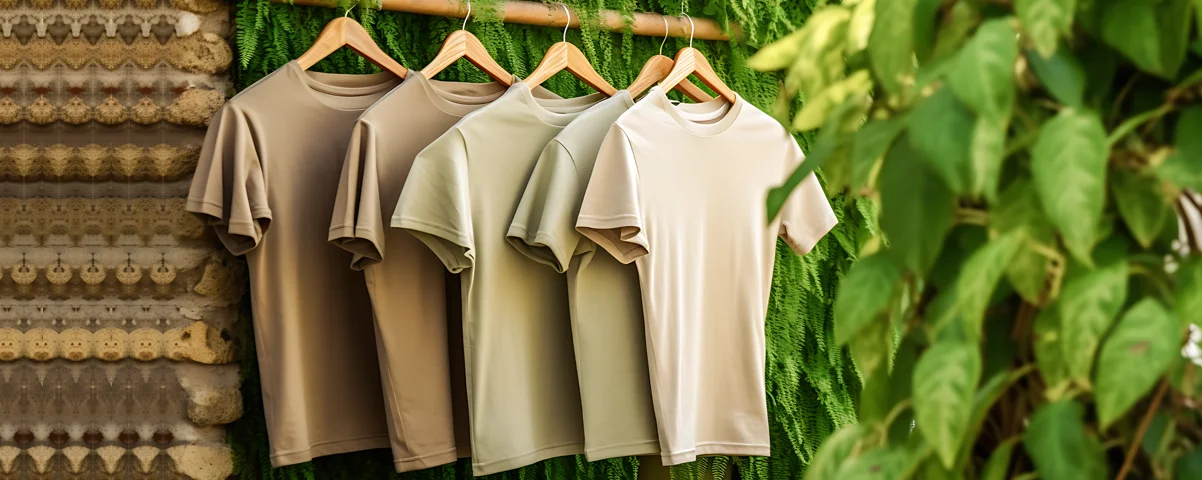Remain Ahead of the Contour by Checking Out Ingenious Style Trends
In an industry as dynamic as fashion, remaining in advance includes even more than just following existing fads-- it requires an expedition of innovation. The merging of technology and style advertises a brand-new age of consumer interaction.

Embracing Smart Textiles
Over the last few years, the garment industry has actually experienced a transformative shift with the assimilation of smart fabrics, an innovative innovation that blends technology with textile. This development represents not only a blend of appearances and capability but likewise a significant leap in the direction of sustainability and personalization in vogue. Smart fabrics, additionally recognized as e-textiles, embed innovative electronic devices such as sensors and conductive strings within the fabric, enabling garments to interact with the wearer or the atmosphere.
These fabrics are developed to check physical specifications, such as heart rate or body temperature level, supplying real-time health and wellness analytics. Past health and wellness applications, clever fabrics are also being made use of for flexible clothing, which can alter color or pattern in feedback to environmental stimuli, therefore providing a vibrant fashion experience.
Furthermore, the advancement of energy-harvesting textiles that create power from motion or sunlight is leading the way for self-dependent wearable innovation. This innovation is appealing to ecologically conscious consumers and designers aiming to lower the environmental footprint of fashion. As study and growth in this area advancement, wise textiles are expected to become increasingly common, improving the landscape of modern style with their multifunctional abilities.
The Rise of 3D Printing
Changing the production landscape, 3D printing has emerged as a game-changer in the fashion sector. This cutting-edge innovation has actually allowed developers to push the borders of imagination, generating detailed and tailored garments that were previously unbelievable. By leveraging digital style and additive production, 3D printing promotes the production of complicated geometries and patterns, permitting designers to experiment with new appearances and structures.
A significant benefit of 3D printing in style is its capability to produce on-demand, decreasing waste and decreasing inventory requirements. This efficiency not just optimizes production procedures yet also permits fast prototyping, allowing designers to bring their visions to life in a much shorter timeframe. Additionally, 3D printing supports modification to a level unmatched by conventional techniques, using customized fits and special styles customized to private consumer preferences.
The increase of 3D printing has actually likewise democratized style, making it obtainable to arising designers that can now fabricate high-grade pieces without significant monetary investment in typical production framework. As modern technology proceeds to advancement, the fashion business is poised to harness the full capacity of 3D printing, exploring new materials and strategies that will undoubtedly redefine how fashion is developed and produced.
Lasting Fashion Advancements
As the style industry faces journalism need for ecological duty, lasting style innovations have actually arised at the leading edge of transformative adjustment. The growing understanding of ecological effect has actually fueled a shift towards more eco-conscious methods and products. Designers and brand names are now focusing on sustainability, incorporating methods that reduce waste and decrease carbon footprints.
One considerable advancement is the rise of round fashion, which highlights recycling and upcycling to extend the lifecycle of garments. This method not only reduces waste however likewise encourages customers to adopt a much more mindful approach to apparel intake.
An additional development depends on the adoption of ingenious dyeing techniques that use all-natural dyes or waterless processes, therefore decreasing the substantial quantities of water and chemicals traditionally made use of in textile dyeing. Moreover, advancements in biotechnology have resulted in the development of lab-grown leather and fabrics, offering environmentally friendly and cruelty-free alternatives to conventional products. With these introducing efforts, the apparel industry is making meaningful strides towards an extra sustainable future.

Tech-Integrated Apparel
Tech-integrated clothing represents an innovative combination of style and technology, improving how individuals connect with their clothes. This ingenious domain name is noted by the incorporation of smart fabrics and ingrained digital parts, boosting both capability and visual allure. From health and fitness trackers installed in sports apparel to warmed coats controlled via smartphone applications, tech-integrated garments provides consumers extraordinary benefit and adaptability.
Pioneering brands are driving this pattern, focusing on developing garments that react to environmental stimulations or customer commands. As an example, some garments can change shade or pattern in response to temperature level shifts, while others integrate biometric sensing units to keep an eye on wellness metrics like heart rate or tension degrees. The smooth integration of innovation right into textiles also includes environmental sustainability, with efforts to establish self-cleaning materials or garments that readjust to weather, hence minimizing the demand for several layers.
Additionally, the development of wearable technology is not simply restricted to clothes but expands to accessories like watches and eyeglasses, additional widening the company website scope of tech-integrated fashion. As the sector proceeds to introduce, the possibility for personalization and personalization in apparel expands, providing customers one-of-a-kind, tech-enhanced fashion experiences that accommodate their individual needs and choices.
Future of Virtual Style
In recent times, the future of online fashion has become a transformative pressure within the sector, leveraging innovations in electronic modern technology to redefine how style is produced, experienced, and taken in. By incorporating enhanced truth (AR), online truth (VIRTUAL REALITY), and 3D important source design devices, designers can now craft interactive and immersive experiences that go beyond standard style boundaries. Digital fashion enables the creation of garments that exist only in digital atmospheres, supplying countless opportunities for technology without the restrictions of physical production.
This digital shift not only offers opportunities for creative expression yet also addresses sustainability worries fundamental in conventional style techniques. Cape Town Sustainable Fashion. By removing the need for physical sources, digital style lowers waste and minimizes carbon footprints. Moreover, the increase of digital fashion straightens with the boosting customer demand for personalized and distinct experiences, as digital garments can be tailored and customized to private choices with simplicity

Conclusion
The garment industry's future hinge on the integration of sustainable methods and cutting-edge innovations - Cape Town Sustainable Fashion. Smart textiles and tech-integrated garments are boosting performance, while 3D printing supplies possibilities for personalization and waste reduction. Sustainable style, through circular methods and green products, demonstrates a commitment to ecological stewardship. Additionally, digital style is poised to redefine consumer communications. Adjusting to these patterns is necessary for brands looking for to stay competitive and appropriate in this quickly developing landscape.
In recent years, the fashion sector has actually experienced a transformative shift with the combination of smart textiles, a cutting-edge development that blends modern technology with fabric.As the fashion industry grapples with the pressing need for environmental responsibility, sustainable style innovations have arised at the forefront of transformative change.In recent years, the future of digital style has actually emerged as a transformative pressure within the sector, leveraging innovations in electronic modern technology to redefine how style is developed, experienced, and consumed. The increase of virtual style straightens with the raising customer need for personalized and one-of-a-kind experiences, as digital garments can be customized and tailored to individual preferences with ease.
The style sector's future lies in the combination of sustainable techniques and cutting-edge modern technologies.